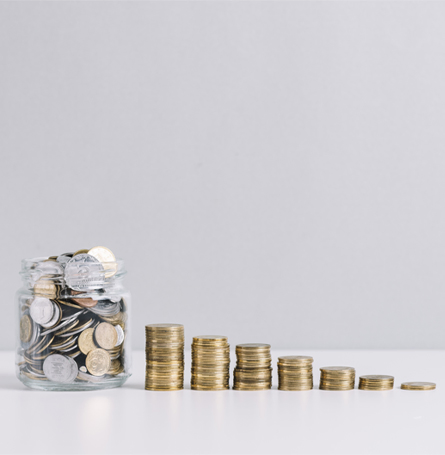Understanding SAD lamps

A SAD lamp replicates natural sunlight, emitting bright light that aids in regulating circadian rhythms (your natural body clock) and mitigating the effects of seasonal mood changes.
The intended usage involves a daily session, usually in the morning, to recalibrate the body's internal clock and enhance overall well-being.
Bright light treatment typically has a person point the light at an angle towards their eyes, with the light being 10,000 lux or higher.
For context, that's about as bright as ambient daylight. But direct natural light is a lot brighter than that.
Power consumption
When you hear 10,000 lux, you likely assume that these LED lights must be taking up quite a bit of energy. However, it's quite the opposite.
SAD lamps are recognised for their energy-efficient design. Most models utilise fluorescent or LED bulbs, known for their low energy consumption compared to traditional incandescent bulbs. The prevailing LED technology is particularly notable for providing luminosity with minimal power usage.
Of course, the wattage can vary between different SAD lamps. So, while the best SAD lamps likely use energy-efficient LEDs, cheaper models might use less optimal models. But even then, they're unlikely to use anything stronger than 60 watts.
If you want to look at a few examples of different intensities and builds, check out our best SAD lamps list.

Daily usage
The recommended daily usage of SAD lamps usually floats around the 30-minute mark but can vary depending on individual needs and lamp specifications. This limited duration contributes to the overall energy efficiency of these devices.
It's also worth mentioning that for people who both want to treat SAD and have an easier morning, there are SAD lamps with multiple functions. The most common iteration is SAD alarm clocks. Aside from having the functions of an alarm clock, these SAD lamps usually also have dimmers, gradually increasing and then decreasing the amount of light used.
However, we don't think this tips the scales all that much. In fact, we'd be surprised if this added to the electricity bill of SAD lights for more than a few pence.
How much do SAD lamps cost compared to other appliances?

If your head is still spinning from all the talk of lux and watts, let's make a better comparison. While it's difficult to find statistics for SAD lamps, we've covered how LED lights cost under a pound a year.
And mind you, this probably refers to constant use, while SAD lamps are only on for about 30 minutes a day.
Compared to that, just turning on your kettle for 10 minutes is going to cost you 17 pence. And if you keep your laptop on for 8 hours a day or more, the energy levels are easily going to surpass 50 quid.
However, it's also worth noting that buying a SAD lamp is a bit more expensive.
For example, to get the best SAD light on the market, you can easily spend more than 100 quid. And since they typically have a 3-year guarantee, that equates to about a 33£/year cost.
So, while they don't use up much energy, it's important to note that light therapy products aren't exactly cheap.
Is getting a SAD lamp worth it?

Now that we know how much energy SAD lamps need and how much they can cost, the only question remaining is “Are they worth it?”
Of course, this is a subjective matter so, we can't blatantly tell you yes or no. However, we would like to put things into context. Firstly, when it comes to SAD, also called winter blues, a lot more people are affected than you'd think.
About 0.5-3% of people experience Seasonal Affective Disorder. For context, that means that you're more likely to experience SAD than to be a redhead. And about 10% of people who experience SAD will be affected during the warmer months. So, getting enough natural light might not be enough.
That being said, SAD lamps can't cure mental health issues – they can just help our brain deal with some of the SAD symptoms. Plus, if you don't mind getting up early in the morning, you can just count on bright sunlight to have a similar effect – even during winter months.
So, unlike dehumidifiers or weighted blankets, you can technically achieve your wanted results without buying anything. Having a SAD lamp just makes it easier and more convenient.
Environmental and safety considerations
In addition to personal electricity costs, it is imperative to consider the environmental implications of device usage. SAD lamps, characterised by their energy-efficient design and limited daily usage, contribute positively to a household's environmental footprint.
SAD lamps also don't use UV light, meaning that there are no known health risks involved. In fact, the blue light emitted by most modern electronics is a lot more harmful to your health than SAD lamps.
Conclusion
In conclusion, SAD lamps exhibit commendable energy efficiency. Their utilisation of energy-efficient LED lights, coupled with a short recommended daily usage duration, positions these devices as a practical and environmentally conscious solution for managing Seasonal Affective Disorder.
Individuals seeking relief from seasonal mood changes can confidently incorporate SAD lamps into their daily routines, knowing they offer therapeutic benefits without significantly impacting electricity bills in the UK or putting them at any type of risk.
However, they are not essential, and people with limited income might not be able to afford the right SAD lamp. So, depending on your financial position, just going outside in the morning could be a much more feasible alternative. But let us know in the comments what you think!














There are no comments yet
"*" indicates required fields